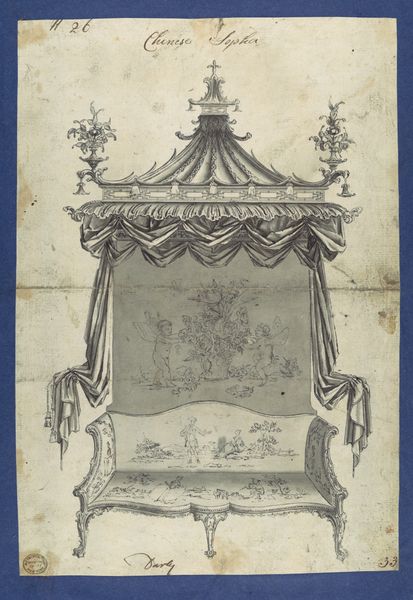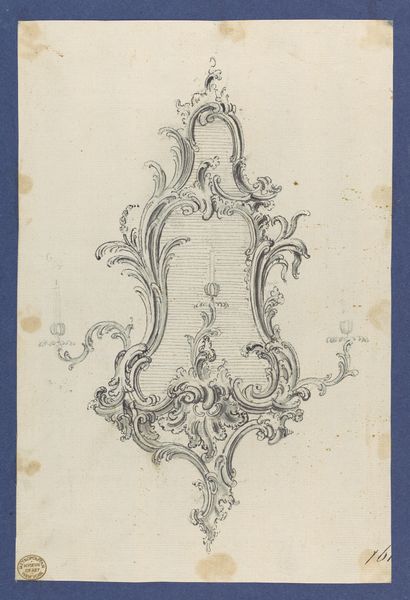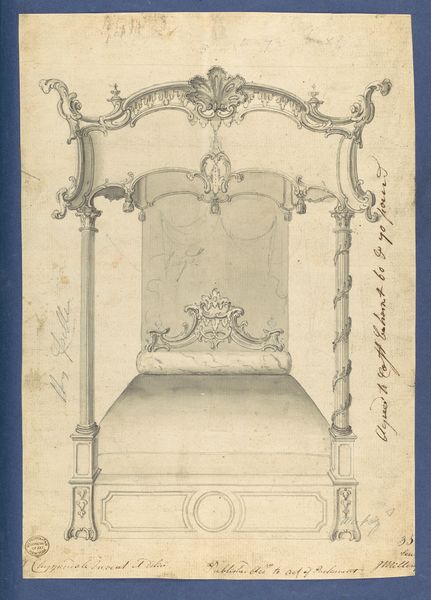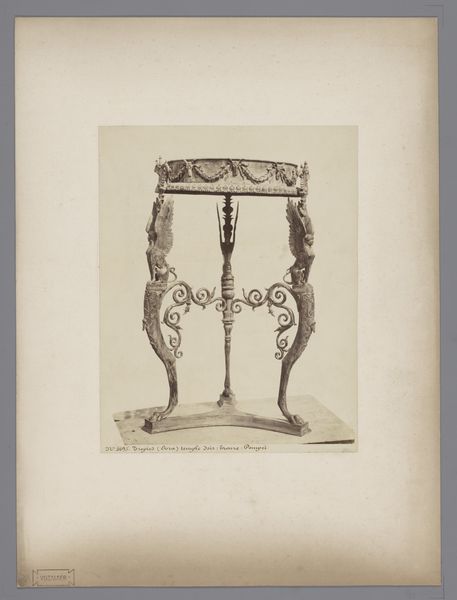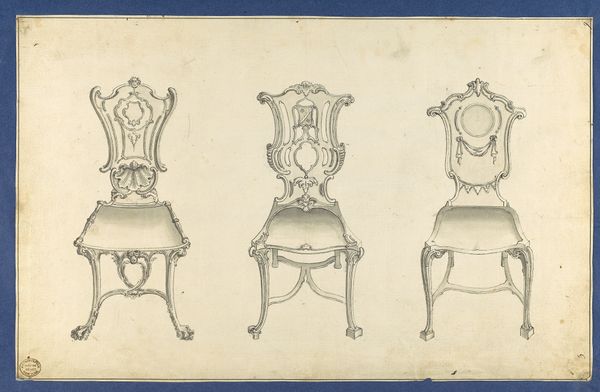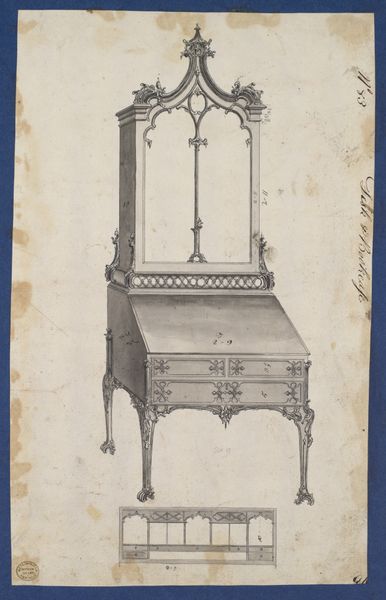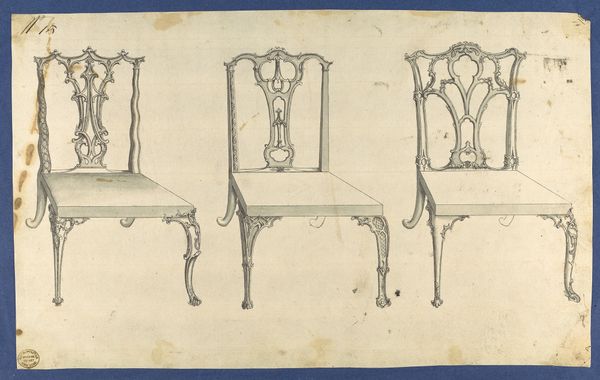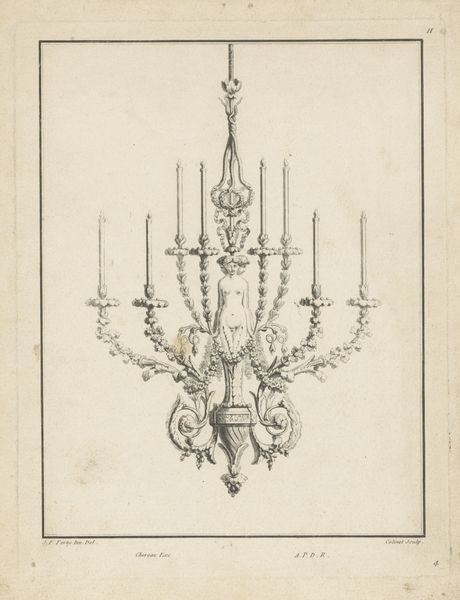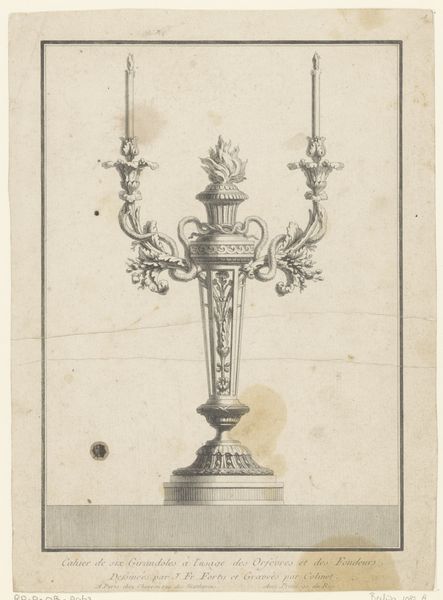
drawing, print, wood
#
drawing
# print
#
form
#
geometric
#
classicism
#
wood
#
history-painting
Dimensions: sheet: 7 7/16 x 5 1/4 in. (18.9 x 13.3 cm)
Copyright: Public Domain
Editor: So, this is "Chair, in Chippendale Drawings, Vol. I," dating back to 1761. It’s a drawing and print by Thomas Chippendale, a design for a wooden chair. It looks incredibly ornate, almost theatrical in its design. What's your interpretation of this piece? Curator: This chair isn't just a seat, it's a statement of power and social standing. Chippendale's designs, while celebrated, catered to a specific elite, perpetuating class divisions. Think about the resources required for such detailed craftsmanship, the labor it demanded. Editor: So, it’s more than just a pretty chair, it speaks to inequality? Curator: Exactly. The curves and flourishes are visual cues to the exclusive world it inhabited. This wasn't meant for everyone; it was meant to reinforce the hierarchies of the time. Can you see the geometric forms beneath the decoration, hinting at a sort of... underlying structure of power? Editor: I see what you mean. The geometric forms are like a skeleton upholding the decorative facade, reflecting a rigid social structure. So how does Classicism fit into this? Curator: Classicism, during this period, was often appropriated to legitimize authority, connecting to ideas of "civilization" while conveniently overlooking the brutal realities of colonialism and slavery which funded this lavish lifestyle. Editor: That definitely gives me a lot to consider, the next time I see ornate furniture. Thanks for sharing this perspective, I had no idea there was so much context behind the design of a chair. Curator: It is a reminder that every object carries embedded narratives reflecting social dynamics. This has also opened my mind further and I am delighted by your insightful questions.
Comments
No comments
Be the first to comment and join the conversation on the ultimate creative platform.
